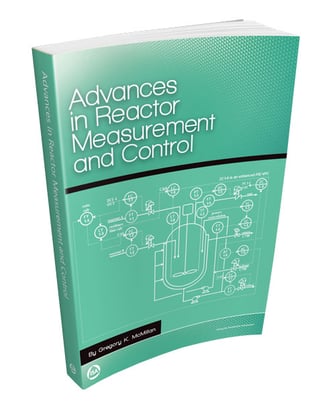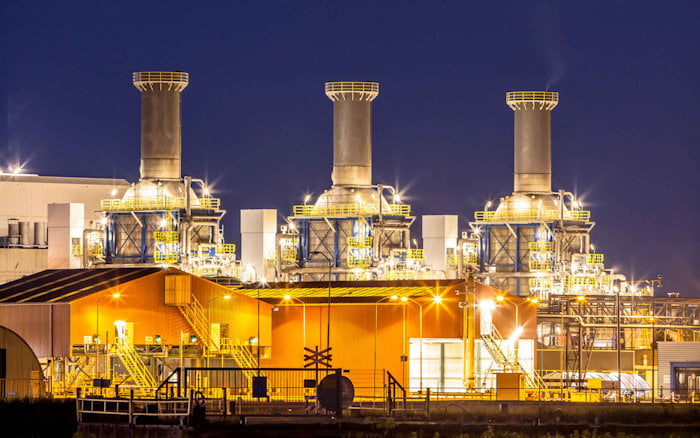The following insights are part of an occasional series authored by Greg McMillan, industry consultant, author of numerous process control books and a retired Senior Fellow from Monsanto.
Editor’s Note: This is Part 1 of a four-part blog series on smart automation of vessel heating and cooling. Click these links to read Part 2 or Part 3 or Part 4
The heating and cooling system is critical for vessels since temperature plays such a huge role in determining product quality. The limit as to what can be done to increase production rate depends upon the capability of the heating and cooling system. The system can also be the source of discontinuities and nonlinearities. Most temperature control problems beyond tuning can be traced back to deficiencies in the vessel coil or jacket or heat exchanger mechanical, process, piping and control system design. In this post, I assess the critical aspects of the design of the jacket and coil.
Heating is required for endothermic reactions (reactions that consume energy), for vaporizing liquids that are being vaporized, or for bringing a vessel up to operating temperature. Cooling is needed for exothermic reactions (reactions that product heat), condensing vapors that are being condensed, and to bring a vessel down to operating temperature. Often both heating and cooling are often required. Split ranged control is used to go back and forth between heating and cooling. In split ranged control for an exothermic reactor with a fail open cooling valve, as the temperature controller output increases from 0% to the split range point, the coolant valve goes from wide open to completely closed. As the temperature controller output increases from the split range point to the 100%, the heating valve goes from closed to wide open. The split range point is traditionally set at 50% but would be better set so that the change in temperature for a change in flow is about the same for each valve (e.g., open loop process gains are the same for each valve).
Cooling and heating can be applied directly to the vessel by heat transfer surfaces in the vessel exterior (e.g., jackets) or interior (e.g., coils) or indirectly via a process recirculation stream. Heat exchangers are used for some jacket temperature control systems and for all process recirculation temperature control systems (discussed in Part 3 and Part 4 of this blog series).
The use of a recirculation system for coils and jackets can eliminate the increase in dead time, process gain, heat transfer lag, and fouling for low heating and cooling loads that leads to oscillations and potentially unsafe operation. The use of precise throttling valves and external reset feedback can eliminate many of the oscillations normally prevalent at the split range point. See Greg McMillan's ISA book Advances in Reactor Measurement and Control for an extensive view of practical opportunities for designing control strategies to achieve product quality and maximize yield and capacity in different types of fermenters, bioreactors, and chemical reactors.
Coils offer faster and more aggressive heating and cooling. Jackets offer a more even heat transfer distribution. However, jackets have a lower utility velocity at the heat transfer surface that can increase fouling rate and require good mixing to ensure that the jacket has a uniform effect on the entire liquid contents. Coils offer excellent heat transfer to fluids in the interior but generally not in a dished bottom. At low liquid levels, the process liquid may not be in contact with the coils. For highly exothermic plug flow reactors such as gas reactors, coils provide more effective cooling from direct process contact in the core and high fluid velocities inside and outside the coils.
Insight: Coils offer faster and more aggressive cooling and do not require a well-mixed process fluid but do not offer good heat transfer for low liquid levels.
Many of the temperature control considerations for coils and jackets are the same. For example, both coil and jacket systems benefit from keeping the utility flow through the coil and jacket constant by the use of a recirculation pump and piping to return utility flow from the outlet back to the inlet of the coil or jacket and from eliminating split range discontinuities by control valve and control system design.
Insight: Coils and jackets both benefit from a recirculating utility flow and better split range control.
A constant jacket flow provided by recirculation and the throttling of a makeup flow is preferred to the throttling of total flow to the jacket. The process gain and dead time for the jacket temperature controller are inversely proportional to flow. At low jacket flows the combination of high process gain and high process dead time can cause sustained oscillations. In addition, at low jacket flows the heat transfer coefficient is greatly reduced and the fouling rate is greatly increased decreasing the capability of the vessel temperature control system to do its job. Fouling can create a large secondary time constant that can is particularly detrimental in the near-integrating and true integrating response of vessel temperature. For runaway reactors, the secondary time constant can cause dangerous unsafe operation from a narrowing of the window of allowable reactor temperature controller gains.
Insight: Throttling a utility makeup flow instead of the jacket or coil flow helps to keep the jacket or coil dynamics constant and reduces fouling of the utility side of heat transfer surfaces.
Mechanical design needs to prevent mixed phases in the jacket or coil (e.g., steam bubbles in coolant and coolant droplets in steam) after a transition between cooling and heating. Control valves must be precise (e.g., minimum backlash and stick-slip) and properly sized to prevent limit cycles and abrupt changes as one valve closes and another valve opens. Valves designed for tight shutoff have excessive seating and sealing friction near the closed position. Isolation valves are not throttling valves and vice versa. To prevent leakage of a utility flow, an isolation valve should be added in series with the throttling valve to open and close on an on-off basis as the throttling valve strokes open or closed.
Insight: Mechanical design and control valve design should prevent mixed phases and abrupt changes in heat transfer medium, temperature or flow rate at a transition between heating and cooling.
All of the control schemes can benefit from the use of external reset feedback (dynamic reset limit) in the vessel and jacket or coil PID controllers. External reset feedback can prevent the primary vessel temperature PID from trying to change the secondary temperature PID setpoint faster than the jacket or coil temperature can respond. External reset feedback with a fast utility valve position readback can help prevent limit cycles from valve backlash that are particularly problematic near the split range point. The reset time can adapted to reduce the overshoot by a providing a smarter time for the valves coming off output limits for large setpoint changes in batch operation and continuous operation transitions and startups.
For highly exothermic reactors, external reset feedback offers the ability to reduce the chance of a runaway by the addition of directional rate setpoint limits to provide a faster response to a demand for cooling. Setpoint rate limits on the analog output block to valves or on the PID for a secondary flow loop provide directional move suppression to help reduce unnecessary crossings of the split range point. The setpoint rate limit is slower in the direction of moving to the split range point. External reset feedback of the actual response of the valve or secondary flow is used to prevent the jacket or coil temperature PID output from trying to change faster than the setpoint rate limits will allow.
Insight: External reset feedback and directional move suppression can help eliminate most sources of oscillations from split ranged valves.
Get involved in the mechanical design of the coil and jacket system to head off potentially severe problems at low heating and cooling loads. Make sure the utility valves have minimal backlash and stiction especially near the closed position that is the split range point. Use external reset using a fast read back of actual valve position and directional move suppression to help prevent oscillations.

About the Author Gregory K. McMillan, CAP, is a retired Senior Fellow from Solutia/Monsanto where he worked in engineering technology on process control improvement. Greg was also an affiliate professor for Washington University in Saint Louis. Greg is an ISA Fellow and received the ISA Kermit Fischer Environmental Award for pH control in 1991, the Control magazine Engineer of the Year award for the process industry in 1994, was inducted into the Control magazine Process Automation Hall of Fame in 2001, was honored by InTech magazine in 2003 as one of the most influential innovators in automation, and received the ISA Life Achievement Award in 2010. Greg is the author of numerous books on process control, including Advances in Reactor Measurement and Control and Essentials of Modern Measurements and Final Elements in the Process Industry. Greg has been the monthly "Control Talk" columnist for Control magazine since 2002. Presently, Greg is a part time modeling and control consultant in Technology for Process Simulation for Emerson Automation Solutions specializing in the use of the virtual plant for exploring new opportunities. He spends most of his time writing, teaching and leading the ISA Mentor Program he founded in 2011.
Gregory K. McMillan, CAP, is a retired Senior Fellow from Solutia/Monsanto where he worked in engineering technology on process control improvement. Greg was also an affiliate professor for Washington University in Saint Louis. Greg is an ISA Fellow and received the ISA Kermit Fischer Environmental Award for pH control in 1991, the Control magazine Engineer of the Year award for the process industry in 1994, was inducted into the Control magazine Process Automation Hall of Fame in 2001, was honored by InTech magazine in 2003 as one of the most influential innovators in automation, and received the ISA Life Achievement Award in 2010. Greg is the author of numerous books on process control, including Advances in Reactor Measurement and Control and Essentials of Modern Measurements and Final Elements in the Process Industry. Greg has been the monthly "Control Talk" columnist for Control magazine since 2002. Presently, Greg is a part time modeling and control consultant in Technology for Process Simulation for Emerson Automation Solutions specializing in the use of the virtual plant for exploring new opportunities. He spends most of his time writing, teaching and leading the ISA Mentor Program he founded in 2011.





